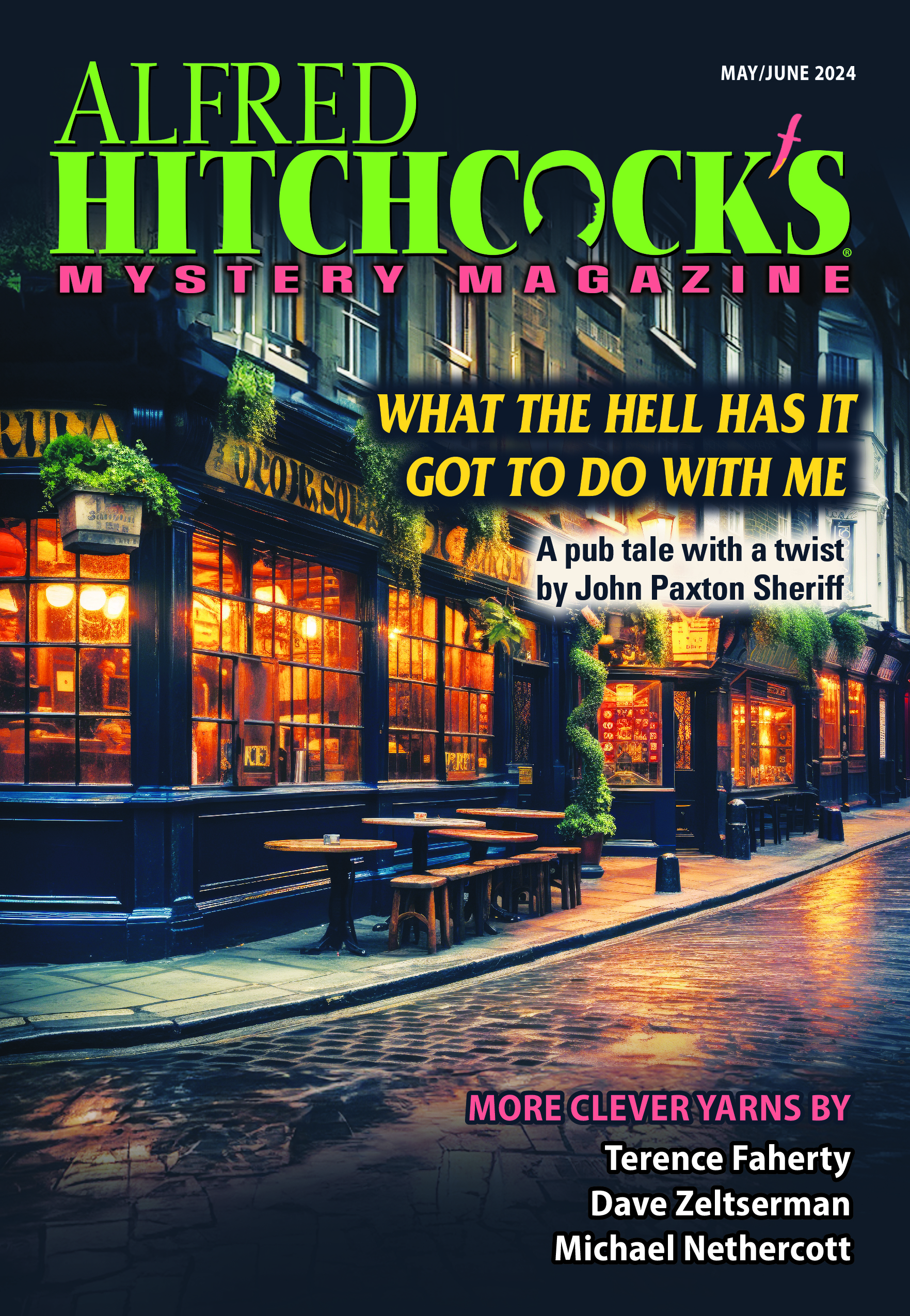
“There’s a man at the craps table that concerns me.”
“Anyone at a craps table concerns me.”
“This one isn’t playing craps.”
“Ah. What’s he doing?”
“Sizing up the joint.”
I have no idea if I’ll use that bit of dialogue. I like it, but does it fit anywhere? In five lines, I get a sense of story, character, setting—even conflict.
But can I use it?
This is how I piece together my Henry stories.
Henry is my guy—my series detective. Henry is a poker player who regularly plays on the Duchess, a fictional riverboat that sails along the Mississippi by St. Louis in the 1950s. He’ll make his fourth appearance in Alfred Hitchcock’s Mystery Magazine in the May/June issue.
I know the crime world of 1950s St. Louis I’ve created. It may have little resemblance to the actual era but I’ve walked its sidewalks with Henry and his con artist friend, Ivy. I’ve taken rides with Vincent, the youthful-looking cabbie. I’ve sat in on poker games aboard the Duchess.
I have a map on my wall of downtown St. Louis from 1955 provided by the Shell Company for visitors to the area when they had a headquarters there. I routinely check the map for Henry’s movements about town.
Because of this, I can riff on dialogue and plot and see what happens. Eventually a plot evolves from these mini-scenes and the real work begins.
“There’s nothing sadder than a bunch of lonely gamblers on Christmas.”
“Brother, I ain’t sad.”
“How’s that?”
“Look around—I ain’t lonely.”
I wrote that two years ago and it has yet to make its way into a story. It resides in a file filled with similar standalone passages, waiting to be chosen.
My love of movies sneaks out here. I write these partial scenes as if I were scripting a movie trailer for my story. Ideas start to come out of the dialogue, and then plots, and sometimes even a finished piece.
My latest Henry story coalesced around the idea—what if there was a bar in downtown St. Louis that served as a haven for the less wholesome elements of St. Louis? And what if Henry was trapped in this bar by a mob boss for reasons he couldn’t work out?
Here’s one bit of dialogue that compelled me, between Henry and his friend Ivy:
“What goes into this code of yours?”
“I won’t lay it all out, but one of the items is that if a fool falls into a tiger pit and doesn’t know where he is, the tiger should let him know.”
Henry looked about the bar. ‘Tiger pit” seemed about right. He counted eight regulars, in pairs or solo, drinking and talking and looking like the hooligans they were.
I’ll close with one more dialogue scene that comes after the passage at the beginning of this essay. It may end up in a story someday:
“This guy—is he looking at the walls or the people?”
“The people.”
“Does he look at his watch?”
“He does. A lot.”
“I see. What time is it?”
“Ten to midnight.”
“Then I suspect we’ve got ten minutes to figure out what’s what.”

